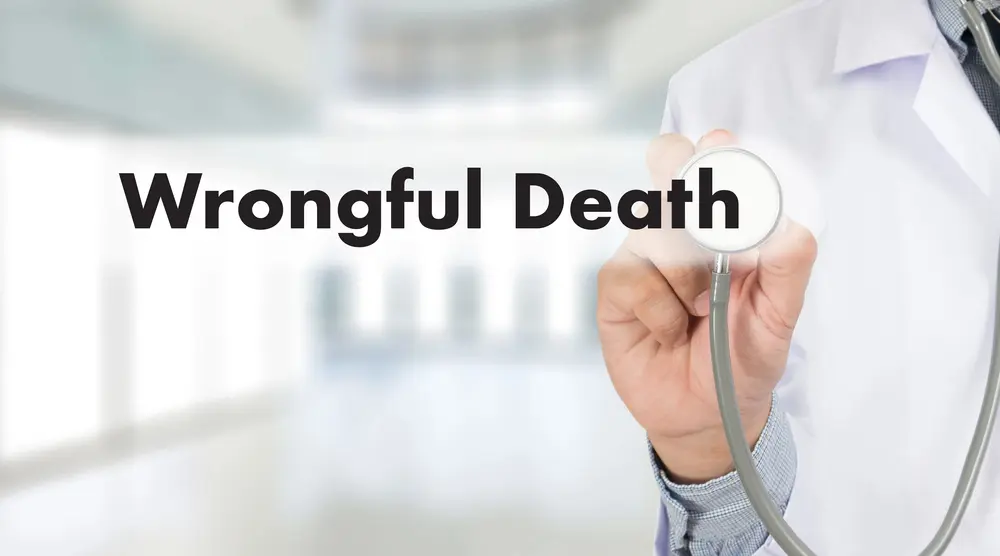When a death occurs due to negligence or someone’s wrongful actions, family members may be entitled to seek justice through a wrongful death lawsuit. This legal avenue allows families to seek compensation for both economic and non-economic losses due to the death of their loved one. Here’s a brief explanation from a wrongful death lawyer in Cheyenne, Wyoming, about factors that influence how damages are calculated in such cases.
How Are Damages Calculated in a Wrongful Death Lawsuit? A Wrongful Death Lawyer in Cheyenne, Wyoming, Explains
Economic Damages
Economic damages, also known as pecuniary damages, are meant to compensate the family for the financial contributions the deceased would have provided if they had lived. These damages are generally straightforward to calculate since they are based on quantifiable financial losses. The key components of economic damages include lost income, loss of benefits, medical and funeral expenses, and loss of services.
Lost income is one of the most significant aspects of economic damages. It includes the income the deceased would have earned from the time of their death until their expected retirement. Calculating lost income requires you to estimate the deceased’s current earnings, potential future promotions, bonuses, and any other sources of income. Additionally, considerations such as the deceased’s education, training, and career trajectory may play a role.
In addition to lost wages, the value of lost benefits, such as health insurance, retirement benefits, and pension plans, can also be included in the calculation of economic damages. Since these benefits would have provided financial support to the family over time, their loss is considered a key component of economic compensation for a wrongful death. Economic damages also include any medical costs incurred as a result of the deceased’s injury before their death, as well as funeral and burial expenses. These expenses are typically straightforward to document through bills and receipts.
The loss of services due to the wrongful death may be considered by the court as well. The deceased may have provided valuable household services, such as childcare, home maintenance, or elder care. The cost of replacing these services, whether through hiring outside help or reallocating family resources, is considered part of the economic damages.
Non-Economic Damages
Non-economic damages are more subjective and aim to compensate for the emotional and psychological impact of losing a loved one. These damages are less tangible than economic damages but are no less important. A court generally considers four main categories when evaluating the non-economic damages caused by a wrongful death: loss of companionship, loss of consortium, pain and suffering, and mental anguish.
Loss of companionship is a legal term for the emotional impact of losing a spouse, parent, or child. Non-economic damages may include compensation for the loss of love, companionship, and guidance that the deceased would have provided. Loss of consortium is a type of non-economic damages claimed by a spouse and referring to the loss of marital benefits such as affection, comfort, and sexual relations. Compensation for pain and suffering endured by the deceased before their death is meant to address the anguish and distress of the deceased in the time leading up to their passing. Surviving family members may also be entitled to compensation for the grief, sorrow, and emotional distress they have experienced as a result of the wrongful death.
Factors Influencing Damage Calculations
The Age and Health of the Deceased
The age and health of the deceased at the time of their death are important considerations in calculating damages. Younger individuals with a long life expectancy and good health typically result in higher compensation for lost income and benefits. Conversely, the damages awarded may be lower if the deceased was older or had pre-existing health conditions that could have shortened their life expectancy.
The Relationship to the Deceased
The relationship between the deceased and the claimant is a significant factor in determining non-economic damages. For example, the loss of a parent or spouse may result in higher non-economic damages due to the profound emotional and psychological impact on the surviving family members. In contrast, the loss of a distant relative may lead to lower non-economic damages.
The Deceased’s Earning Potential
The deceased’s earning potential is another factor in calculating economic damages. This includes not only their current income but also their potential future earnings, promotions, and career advancements. Courts may consider the deceased’s education, skills, and career trajectory when assessing their earning potential.
The Deceased’s Contribution to the Household
The deceased’s contribution to the household, both financially and through services, is another important consideration. If the deceased was the primary breadwinner or provided significant household services, the economic damages awarded may be higher to account for the substantial loss to the family.
Methods for Calculating Non-Economic Damages
Multiplier Method
In some cases, courts use a multiplier method to calculate non-economic damages. This involves multiplying the total economic damages by a certain number, usually between 1.5 and 5, to arrive at a figure for non-economic damages. The multiplier chosen depends on the severity of the loss and the circumstances of the case.
Per Diem Method
The per diem method assesses the daily pain and suffering of the deceased and determines a monetary value. That value is then multiplied by the number of days the deceased suffered before their death. This approach is less common but may be used in cases where there is clear evidence of prolonged suffering before death.
Methods for Awarding Settlements
In wrongful death cases, damages may be awarded as a lump sum or through a structured settlement. A lump sum is a one-time payment of the total damages awarded, while a structured settlement provides periodic payments over a specified period. The choice between these two options depends on the family’s financial needs and the specifics of the case.
Wyoming’s Law Regarding Wrongful Death Claims
Wyoming does not place a cap on economic or non-economic damages, which means that families are free to seek full compensation for their physical and emotional losses. Wyoming also follows a comparative negligence rule, which means that if the deceased was partially at fault for the incident that led to their death, the damages awarded may be reduced by the percentage of their fault.
Wyoming law allows surviving family members to seek compensation for both economic and non-economic damages in wrongful death cases, but it requires that a wrongful death representative be appointed to file the claim. This representative must be someone who will fairly represent all beneficiaries of the claim. The representative is typically appointed by the court and could be a family member or another individual closely associated with the deceased.
Once appointed, the representative is responsible for managing the legal process on behalf of all eligible beneficiaries, ensuring that the interests of the deceased’s loved ones are adequately protected. In Wyoming, eligible beneficiaries typically include the deceased’s spouse, children, parents, and sometimes other relatives who were dependent on the deceased. This structure is designed to prevent conflicts among potential claimants and to streamline the legal process and make sure that all parties entitled to compensation receive a fair share of any awarded damages.
If you have lost a loved one due to someone else’s negligence, contact Ochs Law Firm in Cheyenne, WY, for expert legal guidance. Our team is here to help you pursue the compensation you deserve.







